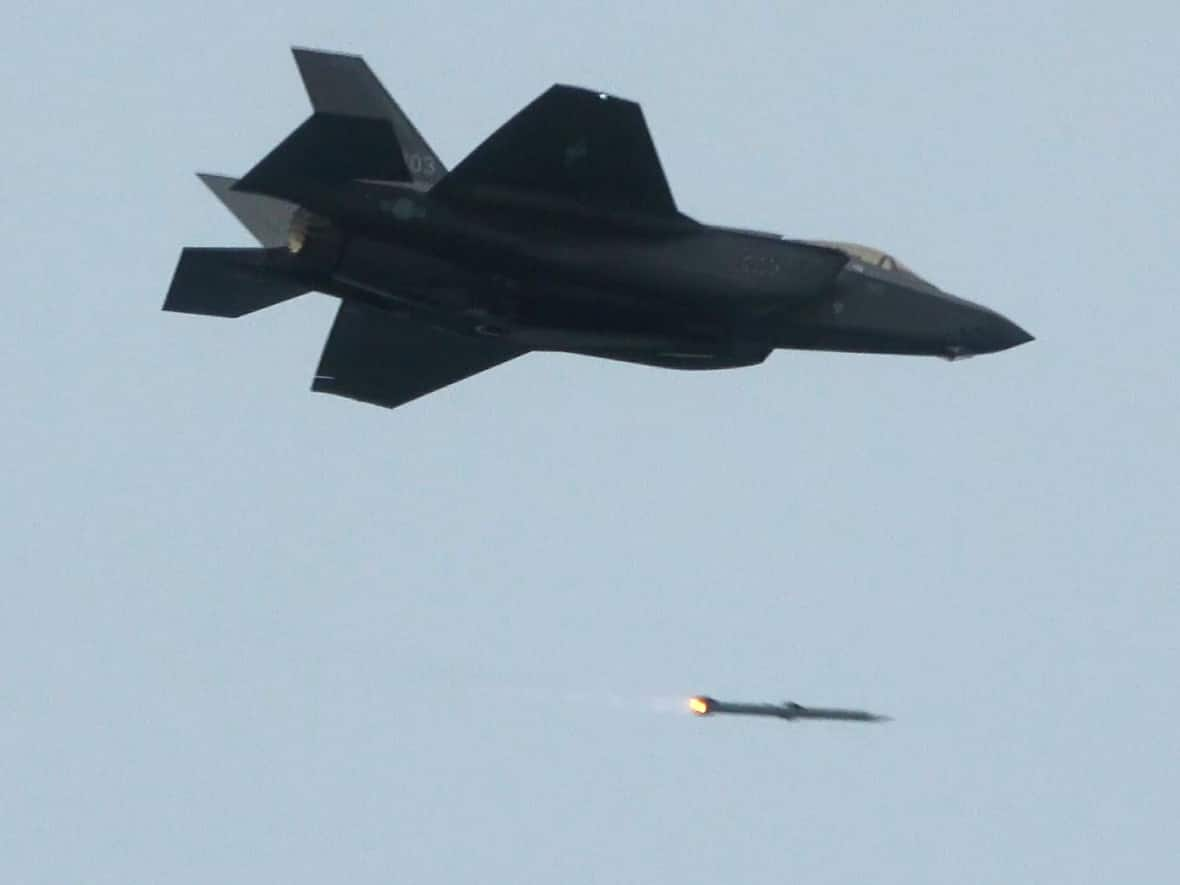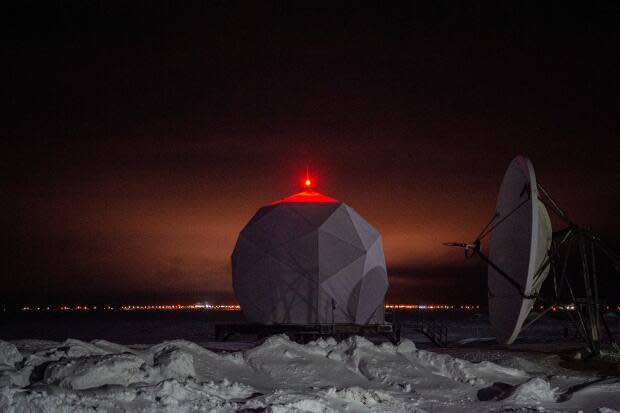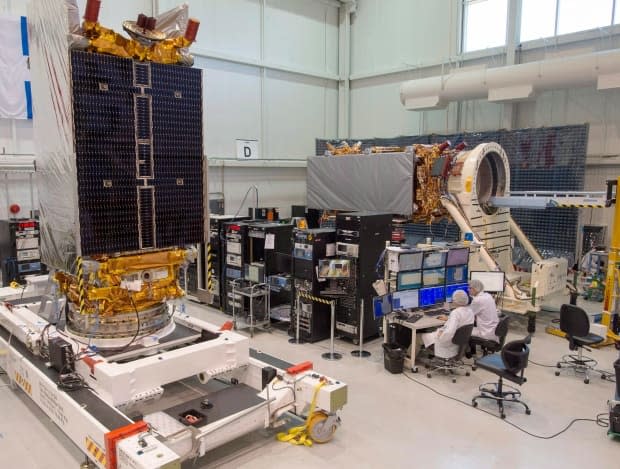PM details defence spending plans during Biden's visit — but the timelines are largely the same

Canada plans to invest $7.3 billion to upgrade its fighter jet bases and Far North landing strips to accommodate the air force's new F-35s, the Prime Minister's Office announced Friday at the conclusion of a visit by U.S. President Joe Biden.
It remains to be seen, however, whether the announcement represents the accelerated investment in continental defence that Washington had been calling for before the two leaders met in Ottawa this week.
Prime Minister Justin Trudeau also announced that the first new Over the Horizon Radar (OTHR) station on Canadian soil — intended to keep track of low-flying threats such as cruise missiles — will be located in southern Ontario. It eventually will connect with another, future station in Canada's Far North and the U.S. radar network that scans the skies for targets at extreme ranges.
Last spring, Canada announced it was going to invest $38.6 billion over 20 years to modernize the North American Aerospace Defense Command (NORAD). The newly revealed investment comes from that pot of money.
U.S. officials have been privately and publicly pressuring Canada to move more swiftly in light of increasingly belligerent relations with Russia and China.
"NORAD is the only binational military command in the world, yet another way in which our partnership is exceptional," Biden said in an address to the House of Commons on Friday.
"It is an incredible symbol of the faith we have in one another and the trust we place in each other's capabilities."
WATCH | We will find 'no more steady friend than Canada':
Biden went on to praise the modernization of NORAD before saying that he's "looking forward to continuing to work in close partnership with Canada as we deliver on these needs so that our people can continue to rest soundly, knowing NORAD is on the watch."
Before the president's visit, which included a meeting with Trudeau's cabinet, U.S. officials had been signalling they wanted to see Canadian money earmarked for continental defence spent more quickly.
"There is a fair amount of infrastructure improvement that needs to be done in the Arctic runways, hangars, et cetera," said a senior U.S. official, who spoke on background prior to Biden's arrival.
"And our ongoing discussions with Canada, relating to the timing of their investments, is to try and make sure that the infrastructure investments that are a part of Canada's NORAD modernization announcement will be completed in a timeframe that is consistent with when the F-35 planes are going to be delivered."
Most defence spending timelines unchanged
Defence Minister Anita Anand announced in January that the federal government had signed off on the final contract to buy F-35 jet fighters to replace the air force's aging CF-18s.
The final agreement for 88 warplanes — involving the Canadian and U.S. governments and the jet's manufacturer — won't see its first delivery until 2026 and the first F-35 squadrons will not be operational until 2029, senior defence officials said at the time.
The Department of National Defence released a backgrounder document Friday that included project timelines — many of which remained close to, or the same as, earlier informal estimates.
Defence procurement expert Dave Perry, vice president of the Canadian Global Affairs Institute, reviewed the backgrounder and said the only timeline that has been substantively accelerated is the one for the first OTHR radar site in Ontario, which is now expected to begin operating by 2028.
He said he wonders whether tangible steps will be taken to deliver that project on time and what resources will be put into moving it along.
"This is a pretty complicated system, from what I understand," said Perry, whose organization has hosted conferences that occasionally have been sponsored by major defence contractors. "Without a commensurate plan to achieve the target date" the announcement is simply "rhetoric."
A second Arctic station is not expected to be operational until 2032.

As for upgrades to the two main fighter jet bases and the purchase of air-to-air refueling planes to support the F-35s, those projects aren't expected to be ready until 2029.
The air force has four northern landing strips, at Inuvik, Yellowknife, Iqaluit and Goose Bay. Improvements to those runways aren't set to be completed for another 11 years.
"The planning process is underway to ensure that this infrastructure will meet NORAD and broader Canadian Armed Forces military requirements, and we will consider multi-purpose opportunities where practical through engagement with Indigenous and Northern governments and partners," said the defence backgrounder.
Friday also saw no movement on one of the most immediate problems facing Canadian defence officials: the replacement of the country's rapidly aging chain of government-owned RADARSAT Constellation satellites. The federal auditor general warned last fall that the satellites could outrun their useful lifespan by 2026.

Replacements for those satellites — which are used by several government departments, including National Defence — are still on the drawing board.
The Liberal government promised dedicated military surveillance satellites in its 2017 defence policy. But as Auditor General Karen Hogan noted in her report last November, those systems aren't set for launch until 2035.
Hogan said she wanted to see "a contingency plan" from the government.
'North America is vulnerable'
The defence department backgrounder document, released Friday, showed the timeline for the satellite replacement has not changed.
Andrea Charron, director of the University of Manitoba's Centre for Defence and Security Studies, predicted ahead of the announcement that OTHR would be the top concern for defence planners.
"It will address a number of radar gaps," said Charron, who recently co-authored with James Ferrguson the book NORAD: In Perpetuity and Beyond, one of the most exhaustive examinations of the binational defence agreement.
She said it's not surprising that the U.S. is leaning on Canada to step up investment and timelines, given the geopolitical climate.
"I think every president has asked Canada to do more, to spend more, to be more concerned about the defence of North America and expand its capabilities," Charron said.
"I think the geopolitical conditions are new and they are unprecedented and North America is vulnerable and we cannot afford to get away with doing what we're doing now."
The vulnerabilities in the North American defence system are pretty clear, she said, and "the United States ... feels particularly vulnerable with now not one, but two peer adversaries or near-peer adversaries. We need to make sure that we aren't vulnerable anymore."


